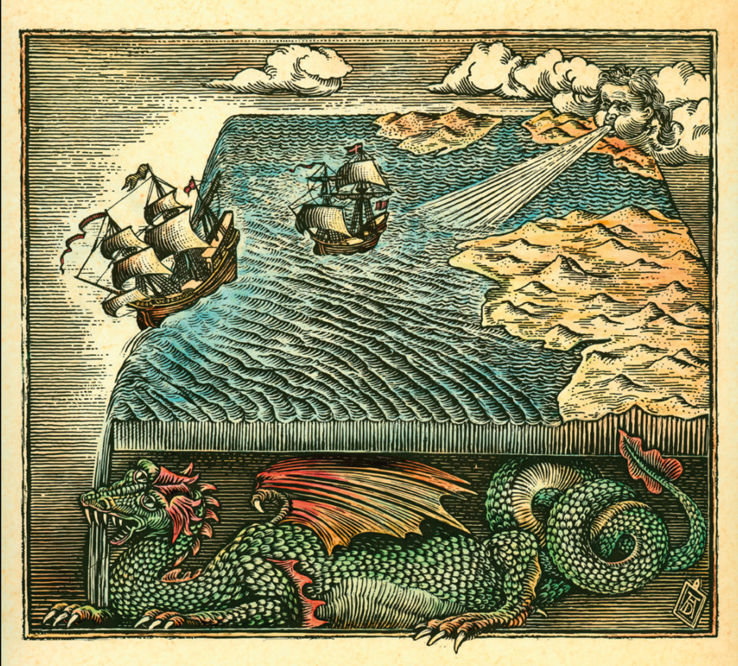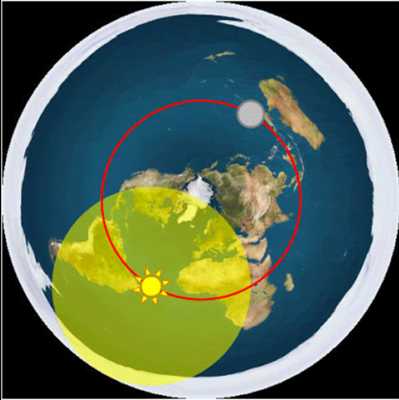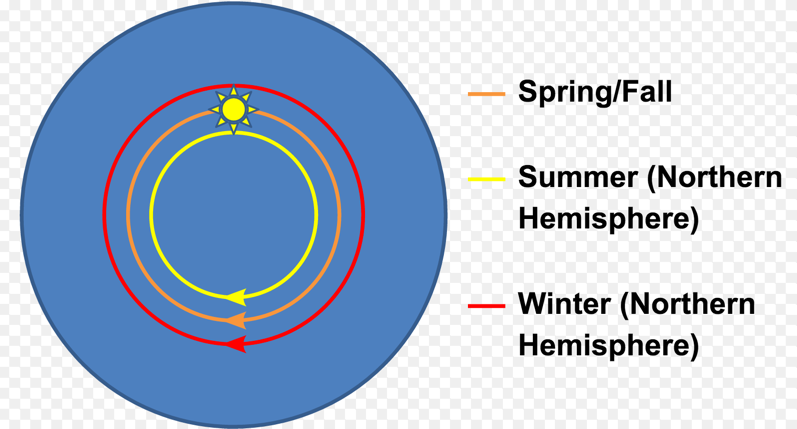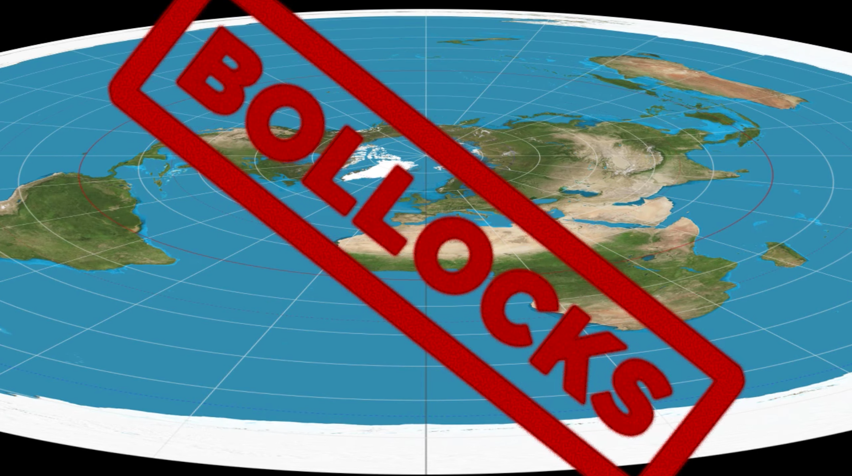Jessie Johnson - EARTH, MOON, SUN and Centri-petal Force. Flat Earth Truth - DEBUNK - here is why you don't fly off the Earth due to its rotation
Hi Jessie,
The bottom line is that your Earth to Earth, Earth to Moon, and Sun to Earth METHOD of calculation is wrong.
Your method does not properly take into account circular motion
You are not using the correct procedure or formula to calculate Centripetal/Centrifugal Force.
Definition:
Centripetal force - the component of force acting on a body in curvilinear motion that is directed toward the center of curvature or axis of rotation
Centrifugal force - an apparent force that acts outward on a body moving around a center, arising from the body's inertia.
It is equal and opposite in value to the centripetal force
Use any three of the following variations for Centrifugal force calculations...
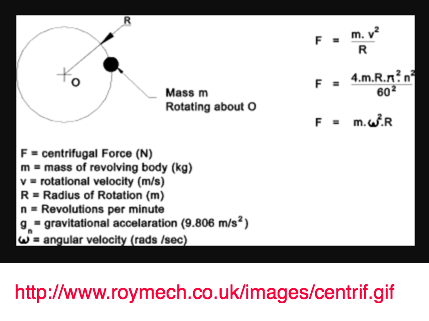
- -
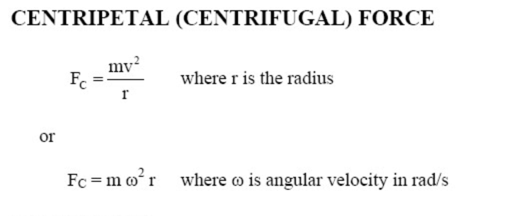
- - - - - - - - - - - - - - - - - - - - - - - - - - - - - - - - - - - - - - - - - - - - - - - - - - - - - - - - - - - - - - - - - - - - - - - - - - - - - - - - - - -
Use this calculator (http://www.calctool.org/CALC/phys/newtonian/centrifugal) to compute the Earth's centrifugal force on an object at the Earth's equator.
Radius = 3,959 miles
Linear speed = 1,040 miles per hour
Angular speed = 15- degrees per hour
Mass = 1 Earth
- - - - - - - - - - -
Result:
Centrifigal acceleration = 0.00343594 of the value of g (which is 9.8 m/sec/sec), OR 0.34 PERCENT of the g
So the centrifugal throw off acceleration from the Earth's surface = 0.00344 = 0.345 percent of the gravitation attraction of you already.
That force at the equator is enough to make you weigh 0.4 grams less, than at the Earth's poles.
That is why we are not thrown off the Earth's surface.
Centrifugal force = 2.01281e+23 newtons (kg * m/s/s/), OR 201,281,000,000,000,000,000,000 newtons
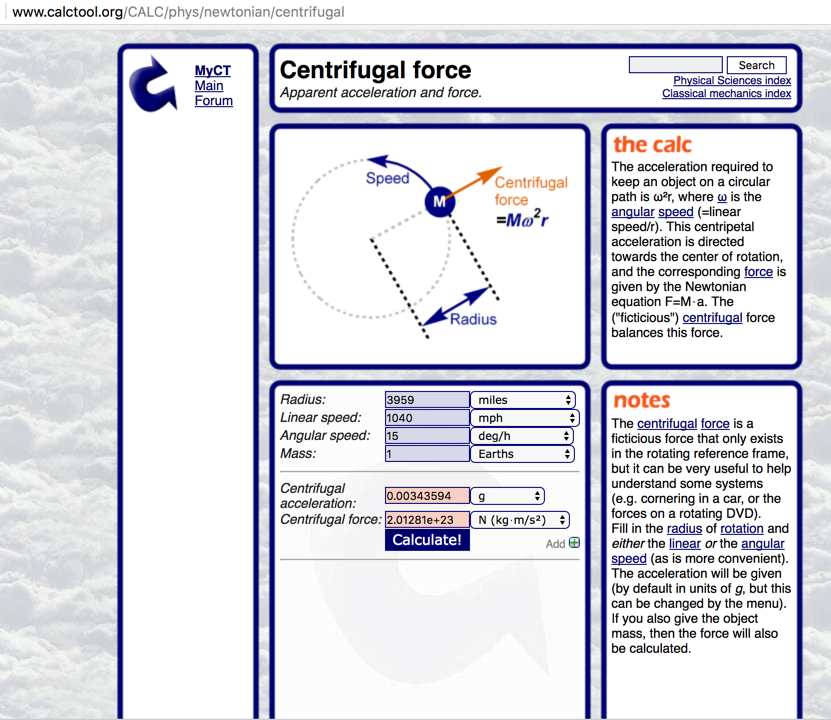
- -
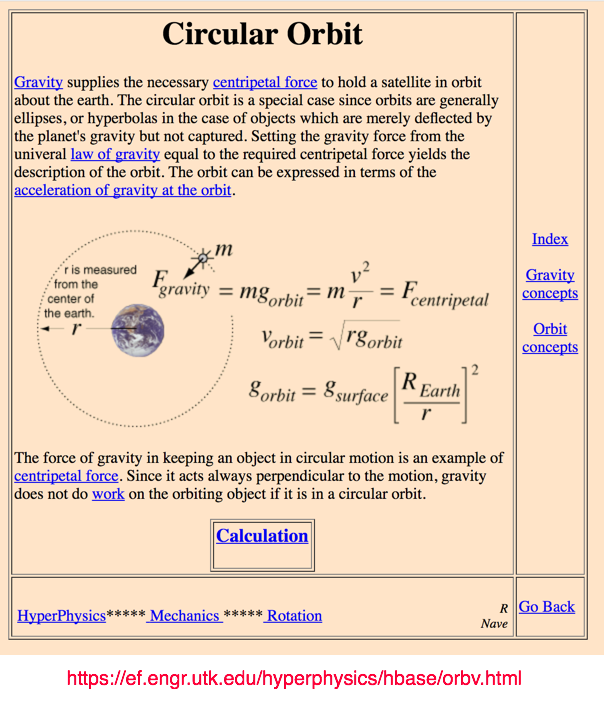
- - - - - - - - - - - - - - - - - - - - - - - - - - - - - - - - - - - - - - - - - - - - - - - - - - - - - - - - - - - - - - - - - - - - - - - - - - - - - - - - - - -
I'm sorry to tell you but some of your conclusion calcs are incorrect. You still are confused between weight, mass, velocity, linear verses angular momentum, centripetal force, and force in general
The misunderstanding presented on this page...
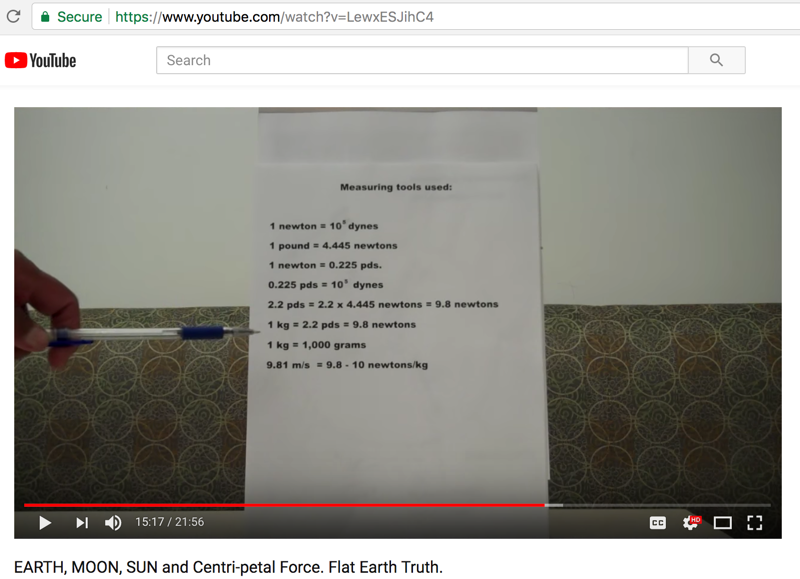
You are mixing up force-pound verses weight-pounds
*
WEIGHT to MASS conversion, on the Earth because gravity at 9.8 m/ses/sec is already figured in
1 pound in weight = 4.45 newton earth (N) = this is now mass, how much matter there is in something.
*
Now here we are dealing with FORCE.
Force = mass * acceleration
1 newton meter = .225 lbs force
lbs or pound-force is a force unit of measure.
1 newton equals .225 pounds because .1020 kg of mass accelerated at 9.8 m/s sq equals a newton and I can easily convert the force of kg mass into pound force since 1kg mass= 1kg mass force at gravity on earth.
So this is based on being on the Earth's surface where the gravitational force is included.
1 pound-force = 4.4482216152605 newtons of force
1 pound-force = 444822 dynes
1 dyne = a unit of force that, acting on a mass of one gram, increases its velocity by one centimeter per second every second along the direction that it acts.
1 dyne centimeter (dyn cm) = 0.000000074 pound force feet (lbf ft)
At average gravity on Earth (conventionally, g = 9.80665 m/s/s), a kilogram mass exerts a force of about 9.8 newtons, due to the force of gravity that is already acting on it.
Note: pds is not a valid unit of measure.
*
VELOCITY in the field of gravity. Velocity DOES NOT DEPEND ON MASS. All fall at the same accleration rate of (g = 9.80665 m/s/s)
Dropped from a height on 100-meters, an object will fall for 4.51 seconds before hitting the earth, and will at that time be traveling at 44.27 m/s
For a 1 kg object, the force of impact on the ground = 9,800 newtons.
For a 5 kg object, the force of impact on the ground = 49,900 newtons
For a 25 kg object, the force of impact on the ground = 245,000 newtons
For a 80 kg object, the force of impact on the ground = 784,000 newtons
Impact velocity (44.27 m/s) is the SAME for all of these different weight objects
Dropped from a height on 1,000-meters, an object will fall for 14.28 seconds before hitting the earth, and will at that time be traveling at 140 m/s
For a 1 kg object, the force of impact on the ground = 98,000 newtons.
For a 5 kg object, the force of impact on the ground = 490,000 newtons
For a 25 kg object, the force of impact on the ground = 2,450,000 newtons
For a 80 kg object, the force of impact on the ground = 7,840,000 newtons
Energy at splat time: 1/2 * mass * velocity2 = mass * g * height
Impact force from falling object (http://hyperphysics.phy-astr.gsu.edu/hbase/flobi.html)
*
1 pound-force (which is not 1 pound of weight). It’s a measurement of force (lbf). Should not be confused with foot-pounds or pound-feet.
Weight and mass conversion – on the surface of the Earth
1 newton earth (N) in mass = 0.22 pounds (lbs) BUT, this is because g = 9.8 m/sec/sec, and that's already in the calculation.
W = mg
This conversion calc is wrong
2.2 pds = 2.2 X 4.445 newtons = 9.8 newtons
pds here is weight.
*
F = m * a
1 newton = 1 kg * 1 m/sec/sec
F = ma is force
The pound-force is equal to a mass of one avoirdupois¹ pound multiplied by the standard acceleration due to gravity on Earth, which is defined as exactly 9.80665 meter per second². Then one (1) pound-force is equal to 0.45359237 kg × 9.80665 meter per second² = 32.17405 pound × foot per second²).
- - - - - - - - - - - - - - - - - - - - - - - - - - - - - - - - - - - - - - - - - - - - - - - - - - - - - - - - - - - - - - - - - -
Linear momentum verses angular momentum are two different animals.
The bottom conclusion math presented on this page is just flat out wrong
That is not the correct representation of centrifugal force.
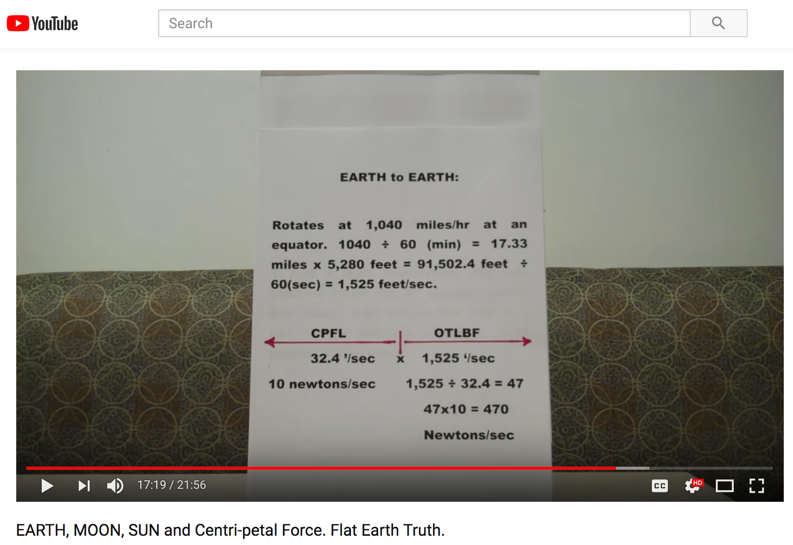
Momentum is mass in motion.
Linear momentun = mass * velocity, or p=mv
Linear momentum unit of measure:
If the mass is in kilograms and the velocity in meters per second then the momentum is in kilogram meters/second (kg m/s).
*
The angular momentum, L of a rigid body with moment of inertia I rotating with angular velocity is: L = I. This is the rotational analogue of linear momentum.
Note: The units of angular momentum are - kg m2/s.
The angular momentum, L of a rigid body with moment of inertia I rotating with angular velocity is: L = Iw.
- - - - - - - - - - - - - - - - - - - - - - - - - - - - - - - - - - - - - - - - - - - - - - - - - - - - - - - - - - - - - - - - - - - - - - - - - - - - - - - - - - -
Update December 27, 2017 - Jesse Johnson has since deleted the following two comments to hide our information from his subscribers. If he was really 100% confident about the numbers presented in his video, there should have been no need for this.
He just want's to make sure that his subscribers remain in the dark, commited to him.
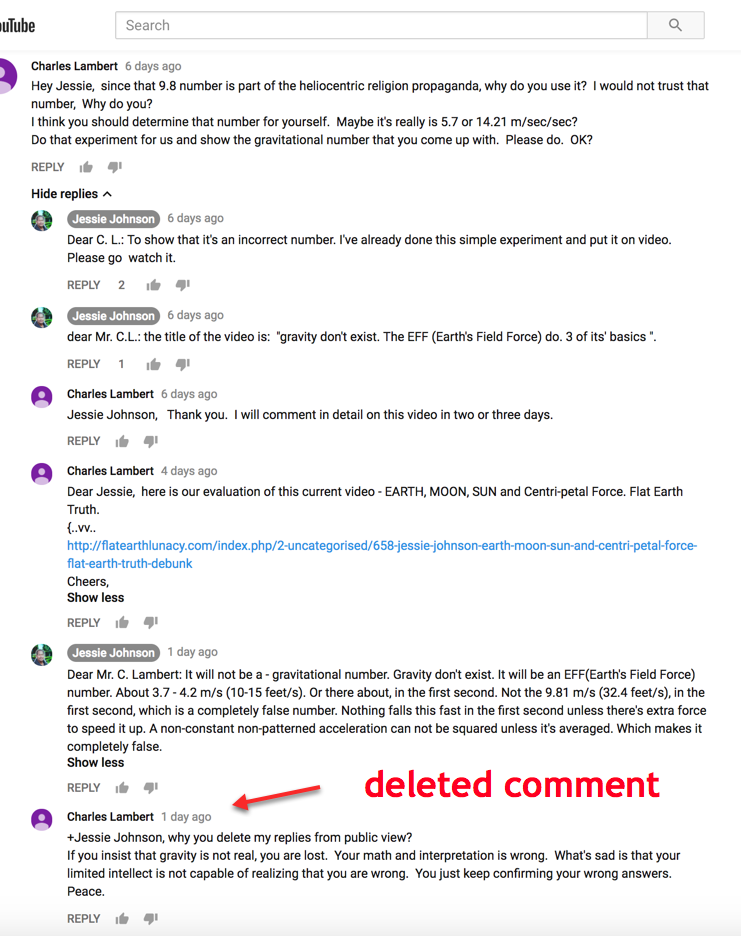
- -

- -

- - - - - - - - - - - - - - - - - - - - - - - - - - - - - - - - - - - - - - - - - - - - - - - - - - - - - - - - - - - - - - - - - - - - - - - - - - - - - - - - - - -
Summary - your calcs and interpretation of the physics involved is wrong. Please take a university level physics 101 class.
- - -
Update: April 2, 2021
Experience the Apollo 11, 13 and 17 missions in real time.
For those that say these events never happened, listen to the hundreds of hours of space-to-ground audio, see the pictures, video & voice from the surface during the walks, mission details - so please stop your DENIALS since you are just embarrassing yourself.
Apollo in Real Time
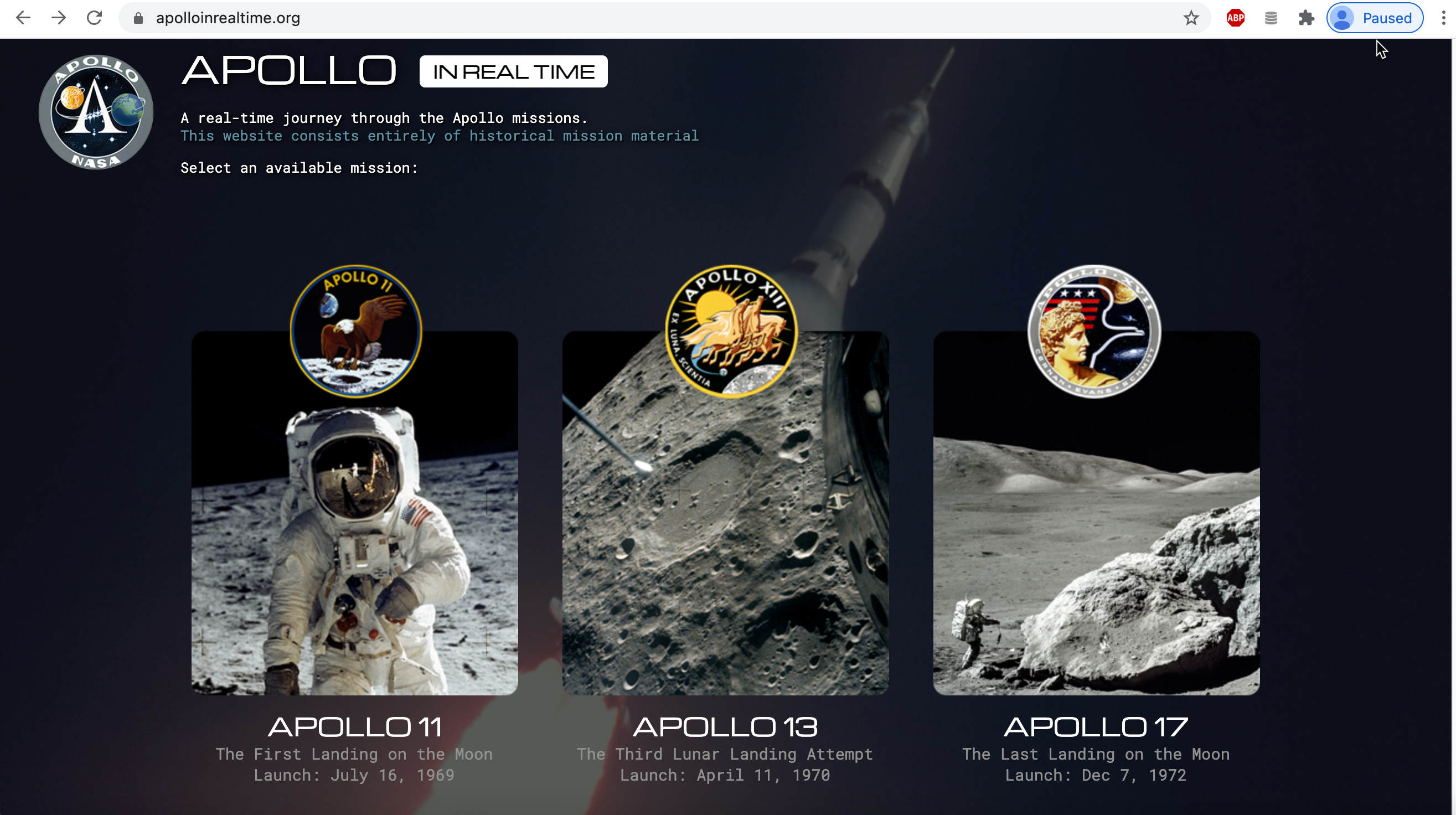
- - -
Apollo 11
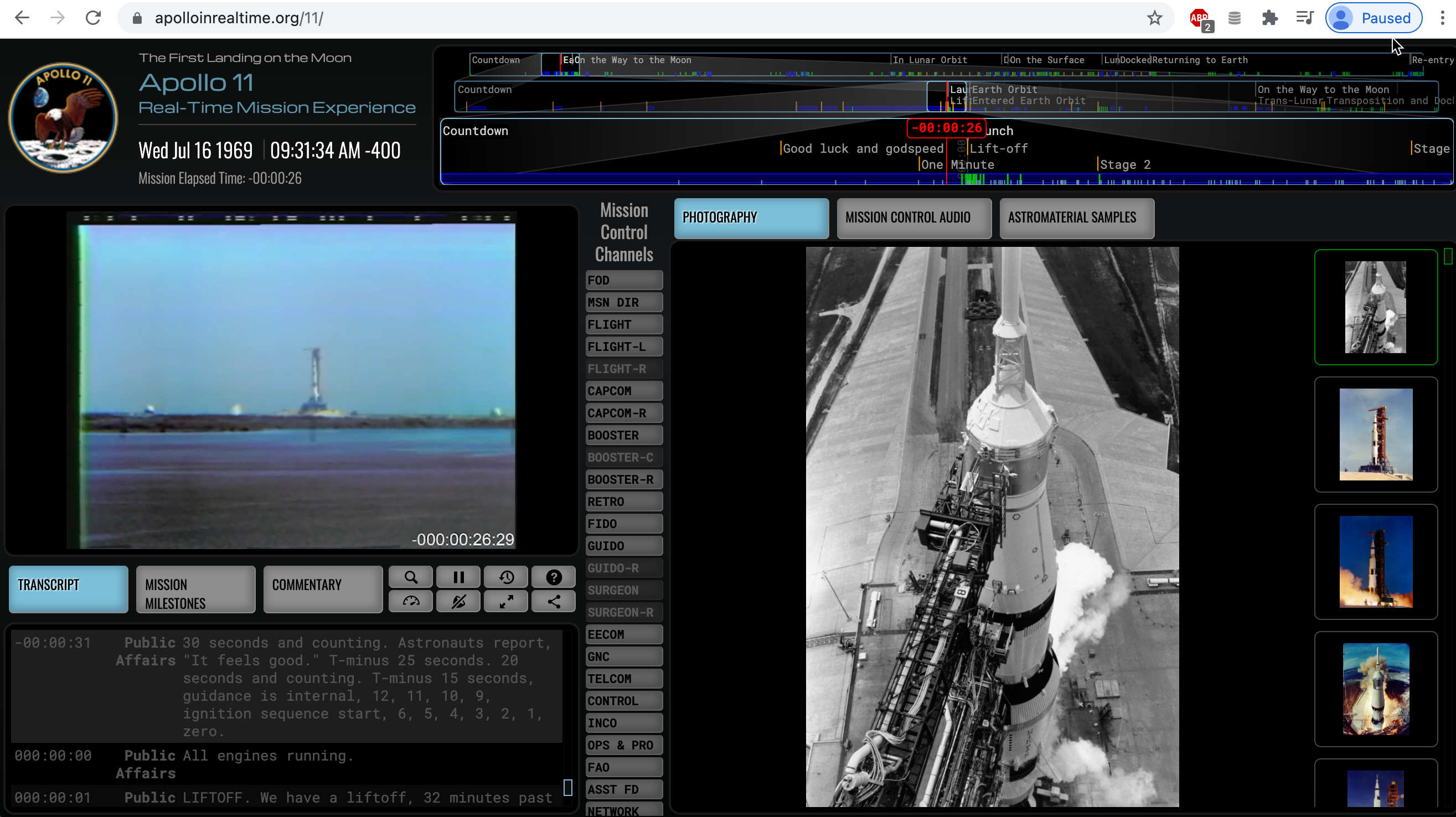
Included real-time elements:
- All mission control film footage
- All TV transmissions and onboard film footage
- 2,000 photographs
- 11,000 hours of Mission Control audio
- 240 hours of space-to-ground audio
- All onboard recorder audio
- 15,000 searchable utterances
- Post-mission commentary
- Astromaterials sample data
- - -
Apollo 13
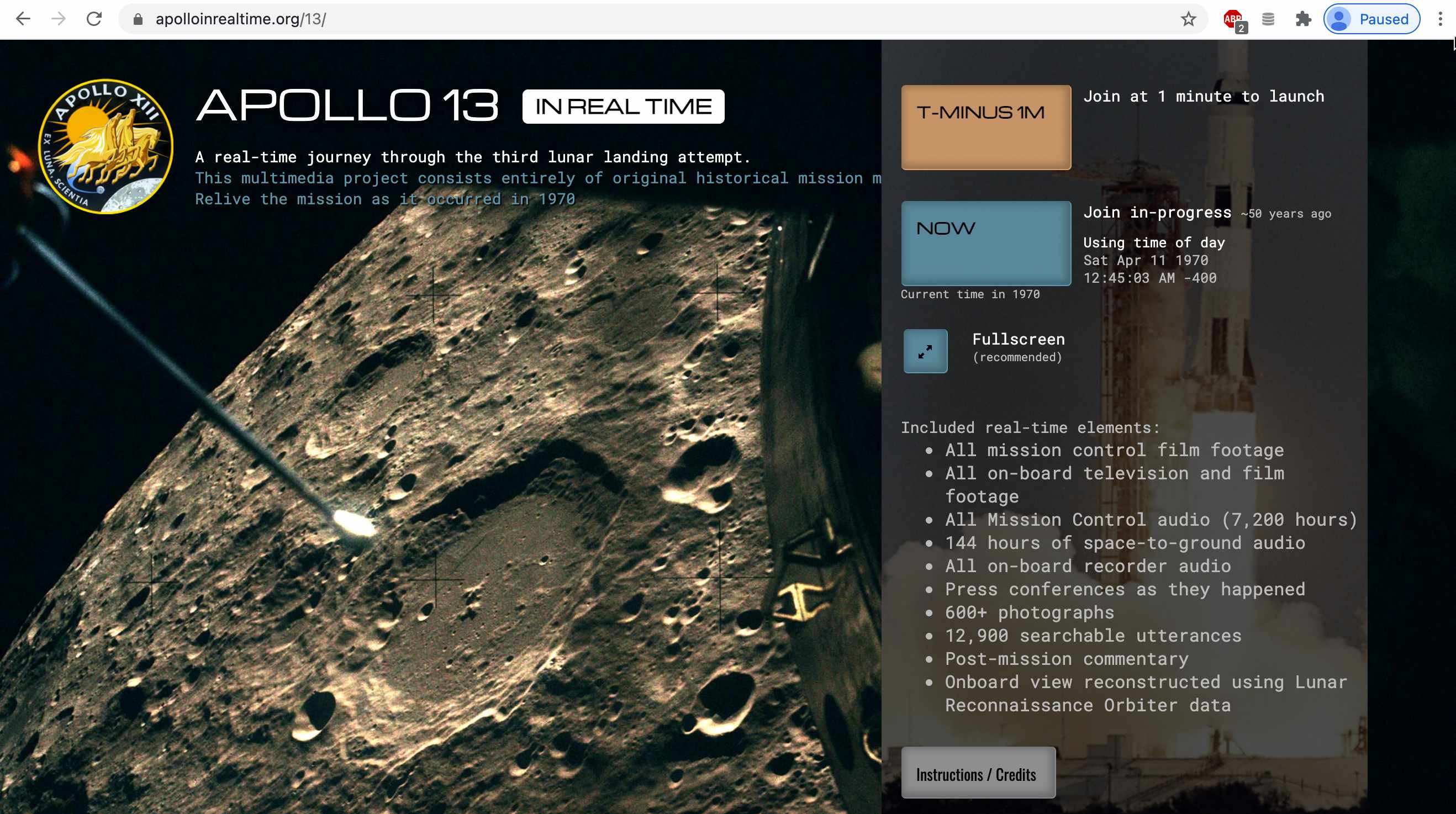
Included real-time elements:
- All mission control film footage
- All on-board television and film footage
- All Mission Control audio (7,200 hours)
- 144 hours of space-to-ground audio
- All on-board recorder audio
- Press conferences as they happened
- 600+ photographs
- 12,900 searchable utterances
- Post-mission commentary
- Onboard view reconstructed using Lunar Reconnaissance Orbiter data
- - -
Apollo 17
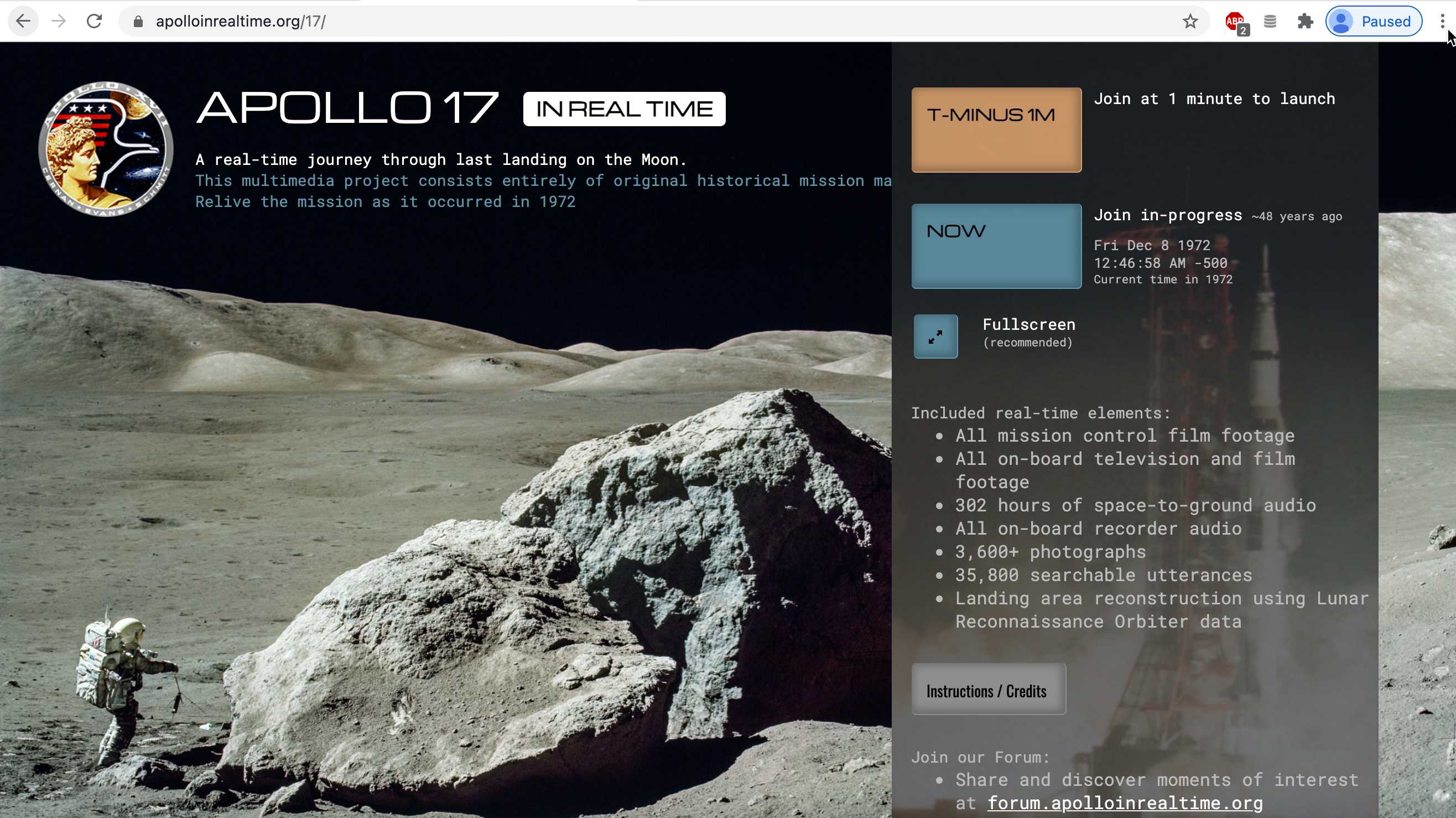
Included real-time elements:
- All mission control film footage
- All on-board television and film footage
- 302 hours of space-to-ground audio
- All on-board recorder audio
- 3,600+ photographs
- 35,800 searchable utterances
- Landing area reconstruction using Lunar Reconnaissance Orbiter data
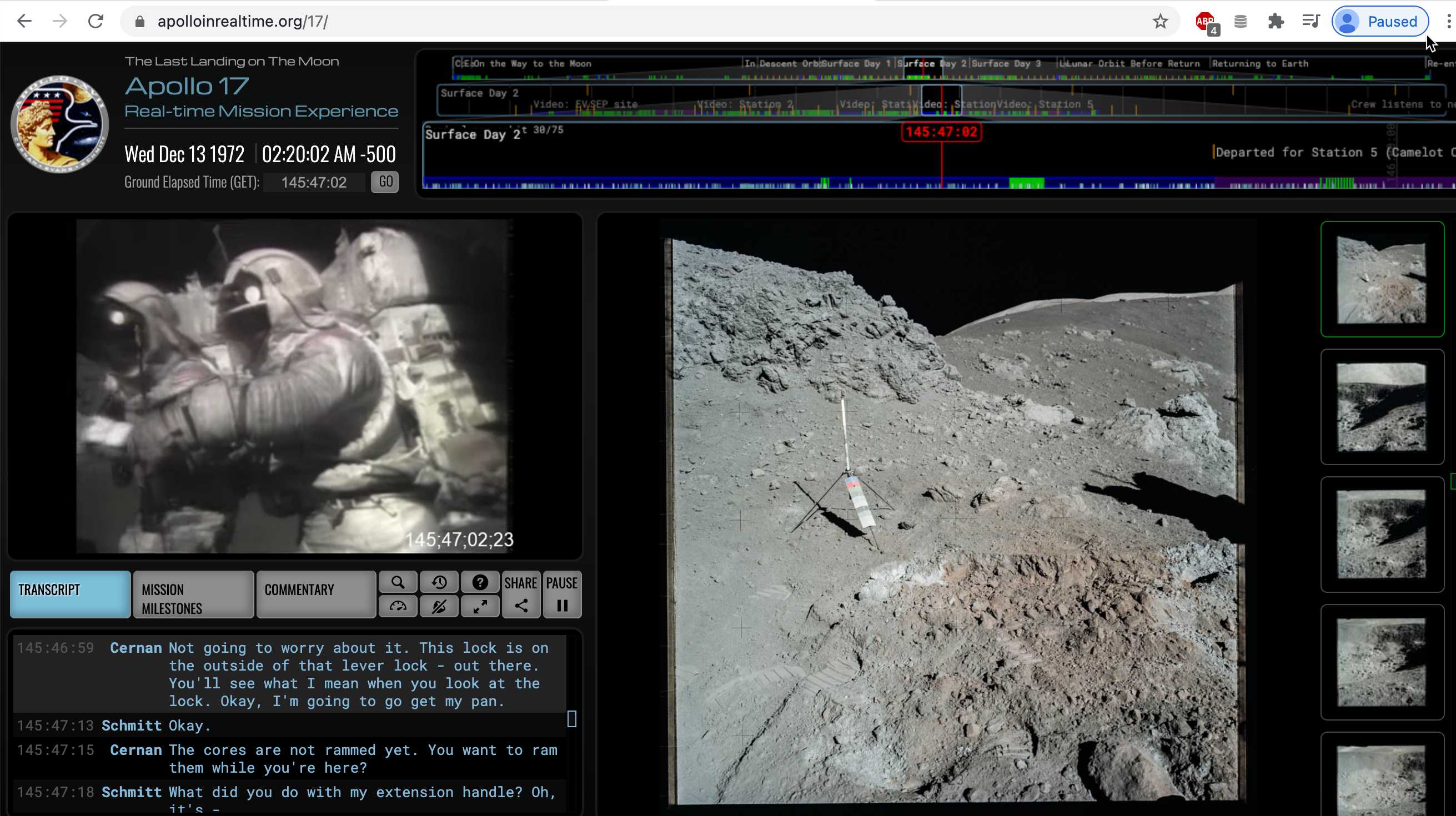
Other info...
Official NASA Apollo photo archives at...
Apollo Lunar Landing Missions:
Apollo 11 - Landed on Moon 20 July 1969, Sea of Tranquility, Returned to Earth 24 July 1969
Apollo 12 - Landed on Moon 19 November 1969, Ocean of Storms, Returned to Earth 24 November 1969
Apollo 14 - Landed on Moon 5 February 1971, Fra Mauro, Returned to Earth 9 February 1971
Apollo 15 - Landed on Moon 30 July 1971, Hadley Rille, Returned to Earth 7 August 1971
Apollo 17 - Landed on Moon 11 December 1972, Taurus-Littrow, Returned to Earth 19 December 1972
Apollo 11 Image Library
http://www.hq.nasa.gov/alsj/a11/images11.html
Apollo 12 Image Library
https://www.hq.nasa.gov/alsj/a12/images12.html
Apollo 14 Image Library
http://www.hq.nasa.gov/alsj/a14/images14.html
Apollo 15 Map and Image Library
https://www.hq.nasa.gov/alsj/a15/images15.html
Apollo 16 Map and Image Library
http://www.hq.nasa.gov/alsj/a16/images16.html
Apollo 17 Image Library
http://history.nasa.gov/alsj/a17/images17.html
- - -
Discussion at - https://www.youtube.com/channel/UC7ipUKERU0tzYFxALJBli4A/discussion
Video at - https://www.youtube.com/watch?v=LewxESJihC4
Our home page all articles - http://flatearthlunacy.com/
kind regards, JonahTheScientist


